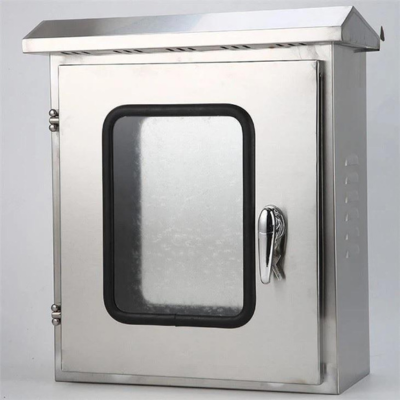If your project needs electrical boxes or enclosures, and you don’t know what are the main types of electrical enclosures, you need to read this guide, I will tell you 76 types of electrical boxes for your business based on material, mounting types, features, applications, and more.
You can also check this infographic to have a quick look:

The Types Of Electrical Boxes Homeowners Should Have
Types of electrical boxes and their uses:
Junction Boxes
Easily the most popular of the electric outlet box options is the junction box. Here, you have an enclosure that properly covers all of your electrical connections and ensures that no interference from the external environment is able to get in and mess up the quality of your overall setup.
Junction boxes are mostly beloved because of their ease of access. You can easily find this electricity box around you, and as long as you’re getting it from a reputable manufacturer, you can count on it to be effective.
That said, you want to keep a few of the most prominent types of junction boxes in mind as well. Some of these include:
Metal Junction Boxes:
Here, you have an electrical outlet box that is made of some metal variant – the most common options include aluminum, steel, and galvanized steel, although some people also prefer titanium. They’re durable and robust, and they especially do well to protect your connection from any form of physical damage.
Plastic Junction Boxes:
While this seems pretty straightforward, this term actually focuses more on a junction box material that is anything but metal. So, you can have options like PVC and ABS – obviously, they provide more protection than just ordinary plastic.
With their light build and ability to last long even in the midst of corrosion, plastic junction boxes are quite effective. That said, they do their best work in indoor locations – not out in the sun.
Weatherproof Junction Boxes
The name pretty much says it all here – this is an electricity box that provides protection against elements of the weather. They can be made of plastic, although the primary focus should be having a material that can stand against weather elements.
Underground Junction Boxes
If you’re not necessarily interested in a junction box that is placed high up somewhere, then an underground junction box is a solid option. These outlet boxes are usually made of PVC, although you can choose any other material – as long as it resists corrosion.
Switch Boxes
If you’re not necessarily a fan of the junction box and its bulky frame, then a switch box might be a bit better for you. These outlet boxes provide a more organized alternative to junction boxes, allowing you to keep your electrical components safely and in a tidy manner. They focus on ensuring that you’re able to prevent any contact with live wires, and you can also find them in different sizes so you enjoy optimal flexibility when it comes to electrical box sizes.
Switch boxes come in different types, with some of the more popular options being the following:
Single-Gang Switch Boxes
These boxes are built primarily to only accommodate a single device – one outlet, one light switch, etc. And, because of their limited capacity, they work better in residential locations; not malls or other commercial buildings.
Double-Gang Switch Box
You’ve got the single, and you’ve got the double. These electrical boxes house two electrical devices, and they work when you need two switches placed together closely.
Triple-Gang Switch Box
If you’re looking for something that goes even bigger than the double-gang box, then this is what you want to have. Place three electrical outlets together in close proximity, and they’ll be able to properly fit in a triple-gang switch box.
Round Ceiling Box
This is a circular electrical box that is placed in a ceiling and helps to support devices that are upwards – ceiling fans, lights, etc. Based on the size of the fixtures themselves, you can find these boxes in different diameters, so flexibility in terms of electrical box sizes is available.
Handy Box
These boxes are small and rectangular, and you usually mount them on surfaces. They are compact, so they work best in situations where you don’t have so much space to fit a larger box.
Ceiling Boxes
For ceiling boxes, you have an option that essentially works if you don’t want to place a box near people. These boxes are installed in ceilings, and they are secure – how many people reach for ceilings to get a hold of things?
Operating an alternative to the electrical wall box, these options can work -although you need to be especially careful and consider the placement parameter. If you’re getting a ceiling box, however, you need to be aware of what you’re getting overall. Here are some prominent options available:
Round Ceiling Box
With their round boxes, these boxes work perfectly if you want to mount a light fixture – or a ceiling fan, or some other device that is to be placed high up. You can find them in different diameters too, so positioning isn’t much of an issue.
Octagon Ceiling Box
They work pretty much like the round ones, except that they have eight sides. That said, their unique shape also comes with an advantage as you have more mounting points and a generally easier installation process.
Square Ceiling Box
If you want a box that looks more modern and aesthetically pleasing, then the square ceiling box will definitely work for you. These boxes work better in industrial and commercial settings, and they provide a considerable amount of functionality overall.
Fan Support Box
The entire point of the design that you get here is that it helps to support the weight of a regular ceiling fan. Besides the box itself, you also get an additional form of bracing or support for your fan. And if you have a generally heavier fixture, you can use the box to provide optimal support for it.
Pan Box
These boxes go a bit from the norm and incorporate a rectangular frame. Add a flat bottom, and you have something that works perfectly for surface-mounted fixtures. If you don’t have enough support for recessed mounting, a pan box works perfectly.
Outdoor Electrical Boxes
If you don’t want your electrical box installed within your building, then the outdoor electrical box is what you want to get instead. These boxes are flexible and versatile enough to work in any location, but their design makes them especially reliable when you need something to work in external environments.
With their weatherproof functionality, these electric boxes easily protect your components from things like rain, the sun, and snow. They are the pinnacle when you’re looking for something that works out in the open, and experts generally recommend them if you need something to operate outdoors.
Pretty much every other option on this list comes in a weatherproof variant. However, you also need to keep an eye out for some unique names when you’re discussing the different types that you have. These include:
Landscape Lighting Box
These boxes work best for lighting fixtures – particularly, the landscape lighting installations placed outside of your building. They tend to be smaller, and they also provide the option of being installed partially – instead of fully.
Pedestal Outlet Box
The pedestal outlet box stands on its own and focuses on protecting your outdoor power outlets. They mostly work in spaces like yards or gardens, and they are especially convenient if you need something to hold the electric circuits in an open area.
In-Use Cover Box
With a flip-up cover, these boxes can achieve the dual benefit of protecting while still being in use. They are usually applied in outdoor outlets where you need your devices to stay plugged in, and you also get a sense of regulatory compliance since they are in line with requirements set by the National Electrical Code (NEC).
Bubble Cover Box
The bubble cover box comes with a cover that allows you to place and store your plugs and other larger electronic devices. These boxes are perfect for switches and outlets that have weatherproof covers, and the fact that you also get a little extra space for plug heads means that you don’t have anything to worry about.
Post Mount Outlet Box
These boxes are more like public utilities. They are mounted on poles and posts, and they help to power outdoor areas like gardens and driveways. As you would imagine, weatherproofing is one of the major functions of these boxes.
Bell Box
The bell box is a strong, sturdy box that is built to accommodate the needs of significant outdoor applications. From outdoor junctions to conduit connections, these boxes are more than perfect. And, as you can imagine, they come in different sizes as well, offering the highest levels of flexibility.
Floor Electrical Boxes
For those who might not necessarily be comfortable with placing their outlets in the ceiling, the floor is always a solid option for placing outlet boxes. Whether you’re running a residential or a commercial building, the floor works pretty well overall and allows you to be more flexible with your placement. Plus, it’s considerably more accessible than the ceiling anyway, so you don’t have much to worry about.
The types of floor boxes available are pretty much the same as the types of ceiling outlet boxes that you have. But, there are also a few bespoke variants that need to be considered:
Pop-Up Floor Boxes
These options are designed to maintain their flushiness with the floor even when you’re not using them. If you need to access your connections and data points, you can just get the floor to pop up, and it shows what you need.
With a sleek and generally accessible appearance, these boxes are more than perfect for use overall.
Recessed Floor Boxes
These boxes are installed entirely below the floor level – so they offer a fully flushed look. In most cases, you see them being used in areas where you need to have consistency in your floor surfacing. And because you can use them with different flooring materials, you don’t have much to worry about when it comes to compatibility.
Adjustable Height Floor Box
The height adjustment feature available in these boxes means that you can easily use them to accommodate different levels of floor thickness. By extension, it means that you can enjoy higher levels of flexibility when it comes to installing with different flooring materials.
Raised floor Box
These are mostly installed on raised floors – which you can generally find in office spaces and other commercial locations. With them, you get easy access to data and power connections, and you don’t have to compromise on the general raised floor design.
Choosing an Electrical Box
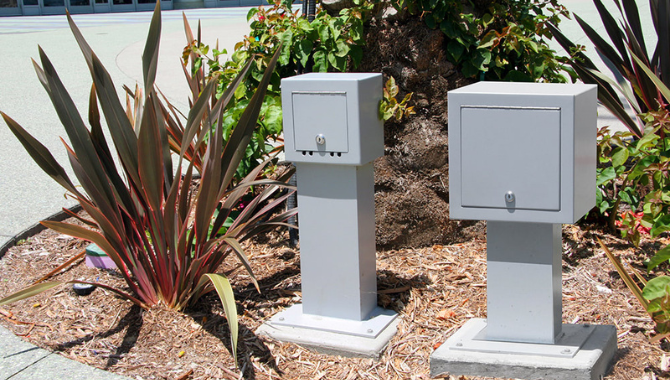
Because there are so many options available when looking for an electrical handy box, you can imagine that making a choice won’t be so easy. This is why you need to keep a few factors in mind as you make a decision.
What Device Type Are You Working With?
Electrical devices come in different types. As you can imagine, you need to have the right box for the right device type.
Does It Need To Be Weatherproof?
If you’re installing your box in an outdoor location, then you will need to make sure that you have a weatherproof box. The last thing you want is for weather elements to get in the way of the efficiency of your box, so this is especially important overall.
Some Boxes Are Specialized
You might also need a bit of a bespoke service from your box. For instance, some boxes work better for ceiling fans, while others are especially adept at protecting things like television sets and media outlets. Understanding your needs and the role of these specialized electrical boxes will help you to significantly cut down on load.
What’s The Makeup Of The Box?
Next, you need to keep an eye out for the material of the box in question. Boxes made of metal material are durable and can provide the needed amount of grounding. But, if you go for something with a plastic material, then you need to ensure that it won’t be used for anything outdoors.
How Do You Plug Your Cable?
Make sure you select a box that has the right number of knockouts for your cable entry – and which supports the type of cable you’re working with in the first place. Finally, make sure that the box is perfect for your cable wiring method, so you don’t end up having to deal with compatibility challenges.
Don’t Be Afraid To Ask For Help
If you’re not sure about what to choose or who to work with, then you can always ask for professional help. We at KDM Fabrication understand electrical boxes perfectly, and we’ll be more than happy to help you ensure that your box is installed perfectly.
PS: To let you understand all types of electrical enclosures, we make a complete list for all possible types of electrical boxes to support your business.
Based On Material
1. Stainless Electrical Enclosure
Their material makes them extremely resilient and strong enough to withstand harsh environments better than standard electrical boxes. Their chemical protection makes them good rust inhibitors with excellent resistance to physical impacts thus suitable for use in industrial and outdoor applications.
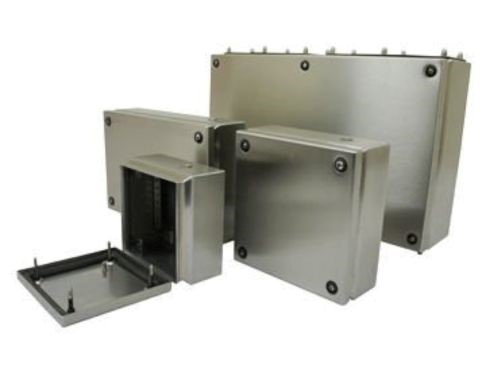
2. Carbon Electrical Enclosure
They are strong and light in weight making them the most suitable for the protection of your device’s interior parts. They are cheaper than the stainless-steel ones and function well in applications with moderate protection requirements. Carbon enables you to easily drill or modify these boxes to suit your application best
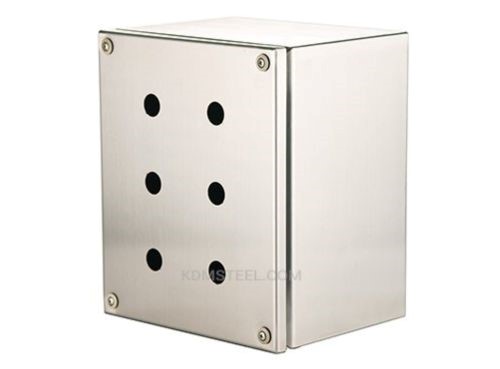
3. Aluminum Electrical Enclosure
With good thermal conductivity, these electrical boxes are rust-proof and very light in weight. With their low maintenance requirements, you can conveniently apply them in areas where weight is a determining factor. They are durable and you can easily machine them, making them ideal for aerospace, transport, and communication industries.
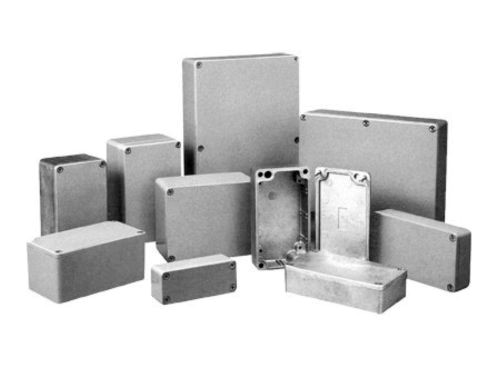
4. Galvanized Electrical Enclosure
These are basically made of steel that is coated with layers of zinc to increase their corrosion resistance. They are an economical choice for both indoor and outdoor applications with the ability to withstand adverse weather conditions.
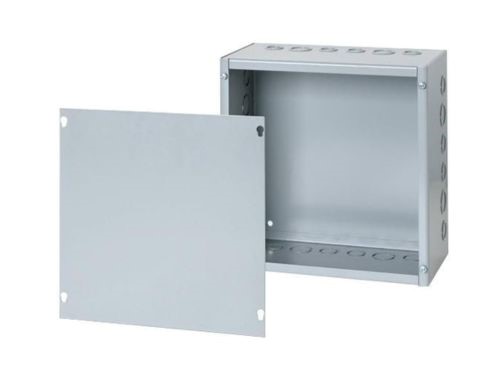
Based On Mounting Types
5. Free Standing Electrical Enclosure
These stand-alone types of enclosures are designed to provide a large sufficient room for your complex control systems and equipment. They are the best bet for industrial applications where you require a good organization of different components that you can easily access with at least an extra person.
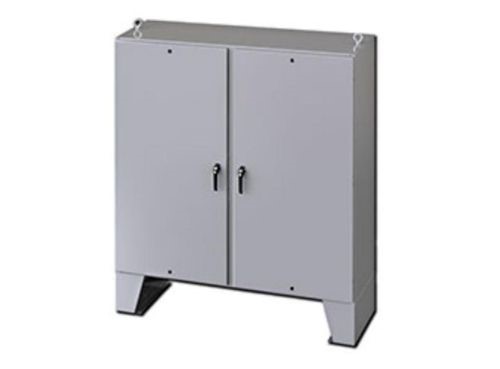
6. Floor Mount Electrical Enclosure
You can tightly fix these electrical boxes to the floor making them a solid and handy housing for your electrical components. You can use them in industrial applications where stability and space is highly essential.

7. Wall Mount Electrical Enclosure
They are developed in a manner in which you can spare your floor space by mounting them on the wall. This architecture is designed to host small-scale electrical components for domestic use. However, you can also use them in industrial and commercial setups if you are looking to save space.
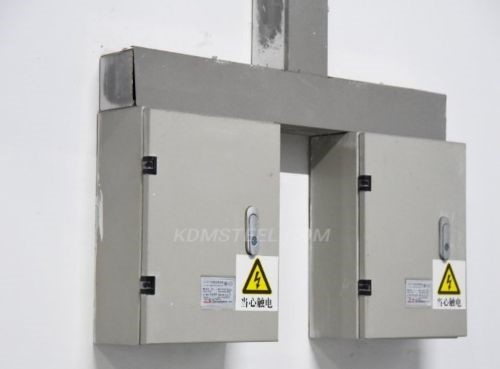
8. Pole Mount Enclosure
These electrical boxes are meant to be affixed on poles commonly found in outdoor applications. Examples include telecommunication, lighting, and traffic control. These applications require elevated protection against harsh conditions for the electrical components.
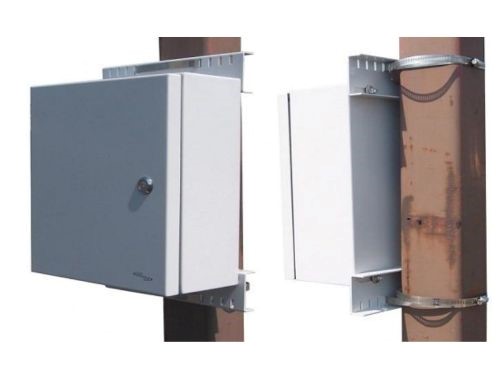
9. Rack Mount Electrical Enclosure
These electrical boxes have standardized frames that provide housing for your equipment modules with security and organization. Such modules may include things like servers and networking equipment that we commonly use in data centers and IT environments.
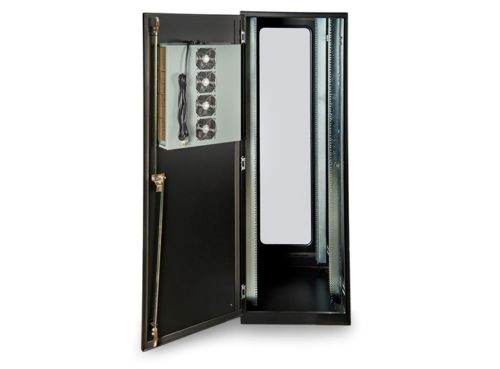
10. Flush Mount Electrical Enclosure
You can mount these enclosures by fastening them on walls with their front surface flush with the surface surrounding it. Their tidy and non-disruptive look makes them the best fit for your residential and commercial applications with an aesthetic touch.
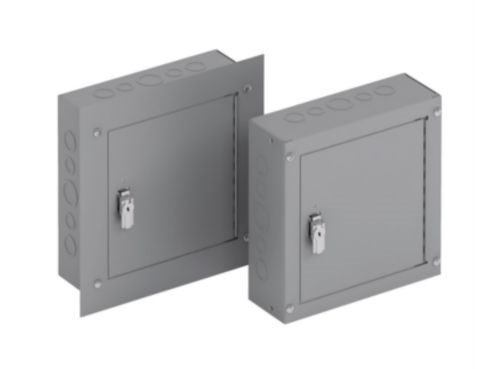
11. Pad Mount Enclosure
You can install these enclosures on a pad of concrete where you can place electrical transformers or various utility components. This enclosure is very reliable since you can easily access and maintain the components enclosed.
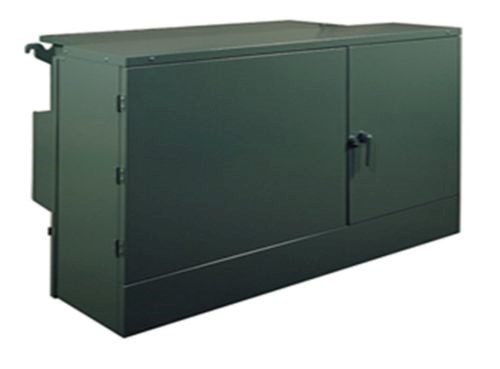
12. Surface Mount Enclosure
They are mounted directly on surfaces such as walls or panels in such a way that you can easily access the components contained in them. You can use them in both indoor and outdoor applications for utilities such as control systems.
Based On Features
13. Large Electrical Enclosure
These enclosures are very accommodating and can house complicated and extensive electrical structures without any difficulties. We mostly use them in industries where you need to arrange very many components together in a single electric box.
14. Modular Electrical Enclosures
You can configure or expand these electrical boxes based on your user requirements giving you the desired flexibility. This makes them the best option for solutions that require swift customization. Such applications include instant smart grids or even data centers.

15. Outdoor Electrical Enclosure
Architectural planning codes requires that outdoor electrical boxes must be able to endure harsh environmental conditions such as rain. These enclosures can deliver solid protection to your external use electrical components such as telecommunication.
16. Vented Electrical Enclosure
They are designed with openings or vents to enable continuous circulation of air inside to prevent any form of overheating of your electrical components. These enclosures are crucial especially if you’re dealing with components that require constant heat dissipation for optimal performance.
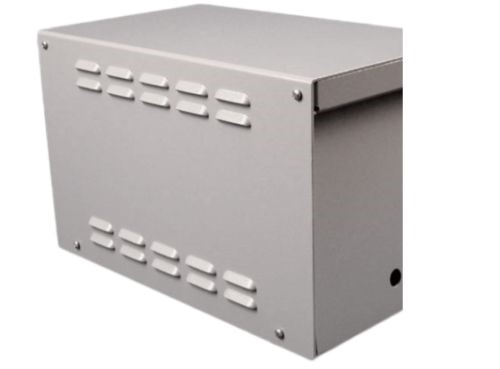
17. Hinged Electrical Enclosure
You can easily access the components inside these electrical boxes through doors having hinges. This gives you an easy time during inspection and maintenance. This enclosure technology can be put to good use for multiple commercial and industrial purposes.
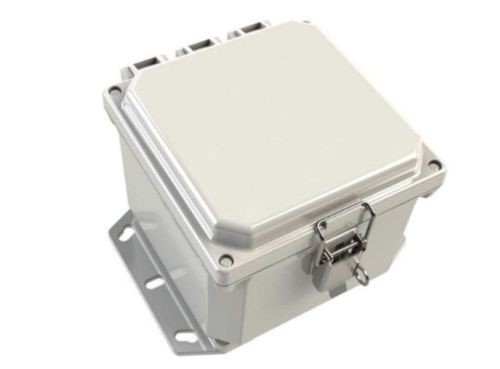
18. Lockable Electrical Enclosure
They comprise of a fastening system that serves to prevent the enclosures content from unauthorized access. They are the best choice when you need to protect very sensitive or highly hazardous electrical installations.

19. Washdown Electrical Enclosures
These enclosures can withstand water directed to them under high pressure and is resistant to various cleaning agents. They work best in sanitary environments such as food processing industries by offering protection to your electrical components against moisture or contaminants.
20. Walk-in Electrical Enclosure
They are large enough to allow personnel to work inside them with ease. These huge cabinets are mostly used in industrial facilities where they allow for easy maintenance and general operations.
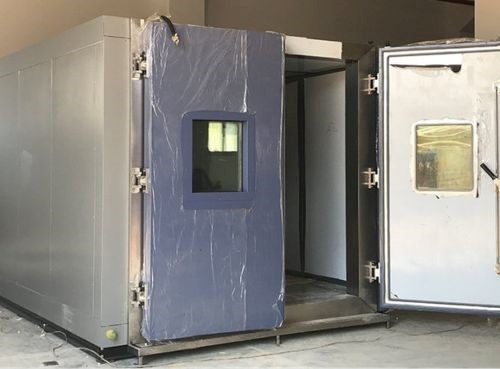
21. Electrical Pedestal Enclosure
Their installation is done on stands that are mainly placed in parking lots, streets, or parks. They have the ability to provide your electrical components with one-off protection with an above-ground level housing.

22. Recessed Electrical Enclosure
You can mount these electrical boxes into walls or surfaces while leaving just the front part of the enclosure visibly exposed. Such a design ensures a slim and invisible look that is suitable for both domestic and business applications.
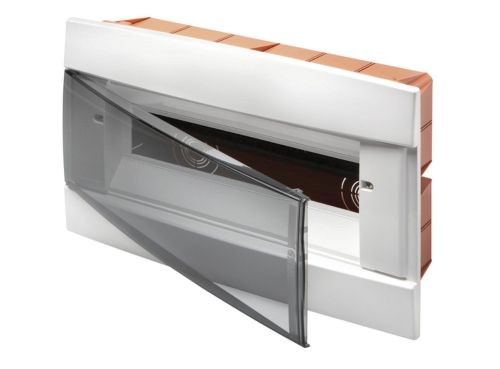
23. Waterproof Electrical Enclosures
These electrical boxes are hermetically sealed to completely prevent any form of contact between your eclosed electrical components and water. They are recommended for wet and submerged environments such as marine or outdoor industrial set-ups within a water environment.
24. Electrical Enclosure with Window
These through-the-glass types of enclosures are characterized by a transparent window frame that offers an inside view of the equipment. You can physically inspect the enclosed components without necessarily opening the electrical box mechanically. This ensures that your equipment is well-protected and secured.
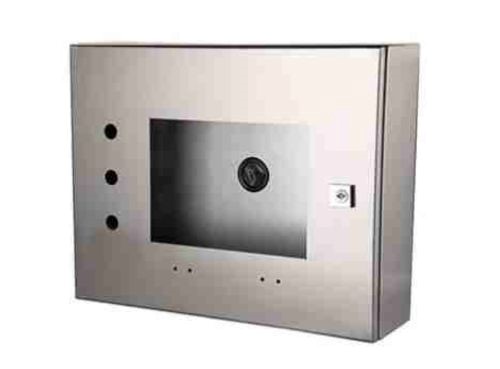
25. Double Door Enclosure
They have a double-door opening amenity that makes access to internal components possible from both sides. This design is ideal for use in industrial set-ups where it is necessary to properly arrange the components for ease of accessibility.
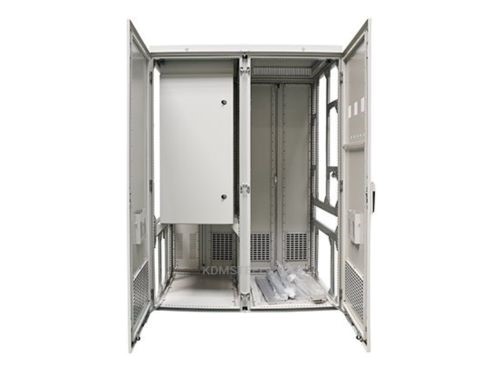
26. Disconnect Enclosure
This enclosure arrangement involves the incorporation of either circuit breakers or disconnect switches. Their purpose is to provide a safe and convenient separation of the electrical circuits enclosed. They guarantee safety and convenient maintenance in industrial applications.
27. Desk Console Enclosure
They are designed to host control panels and operator interfaces. They offer sufficient space for the console operator to monitor and respond to the control systems. We widely utilize them in control rooms and various industrial setups.
28. Vandal Resistant Enclosure
They are meant to withstand any form of vandalism since they are built using durable materials such as metal. They also come with tamper-proof locking systems that can withstand heavy impact and scratch abuse. They are best suited for public areas where the raise the protection level of your electrical components.
29. Powder-Coated Enclosure
They are fabricated from sheet metal parts that have been sprayed with a powder-coated finish to enhance protection and durability. This protects them from corrosion and scratches. They work well in extreme environments since their wear resistance is enhanced.
30. Single Door Enclosure
These electrical boxes possess just one door that gives you access to its internal electrical components. They are usually relatively small in size and widely used where you require straightforward access during maintenance. They are also very easy to clean.
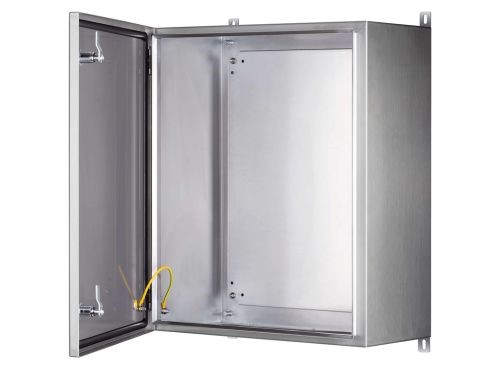
31. Wall Mount Racks
These enclosures are meant to be placed on walls to save on floor space mainly for networking and telecommunication equipment. They are the best choice for narrow site installations where every square meter of space matters.
32. Four Post Racks
Four post racks are commonly used when you are installing servers or highly bulky and heavy hardware. Scalability is one of the key benefits of computer systems therefore you can use this centralized enclosure for data centers and IT operations.
33. Two Post Racks
The two-post version of rack enclosures is intended to accommodate units having lighter networking devices. They are commonly used in applications where space and cost efficiency are vital for operation. You will find them mostly in IT closets or in telecommunications.
34. Indoor Electrical Enclosure
As the name suggests, we mostly apply them to buildings that have controlled environments. These electrical box versions may not be as rugged as the outdoor ones but they offer enough protection for your indoor electrical components.
35. Snap Together Enclosures
These fitted enclosures have a simple snap-together design that you can easily operate with no need for any other fasteners or tooling. They are suitable for electrical components that can easily be mounted and dismounted. Most preferred for light-duty applications.
36. Junction Box Enclosure
Commonly used for electrical connections and wiring junctions inside houses. They are a fundamental part of the chain of domestic or commercial electrical distribution in buildings.

37. Electrical Meter Box
You can use these enclosures to house electrical meters and other related electrical equipment. They can protect them from harsh environmental conditions and deter any unauthorized access or intrusion. For easy access by utility companies, you can mount them on walls outside your building.
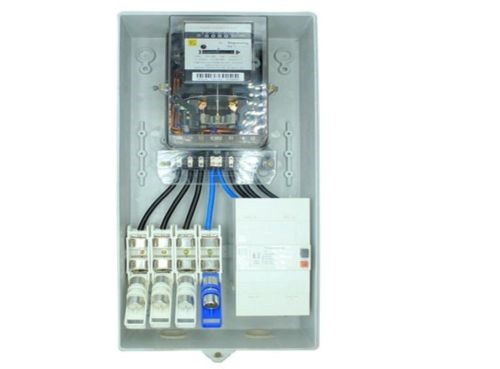
Based On Application
38. Control Station Enclosures
These enclosures are used for collecting data using control switches, indicators, and various operator interface devices that are housed within it. The primary function of these enclosures is to centralize different control process devices in a single space.
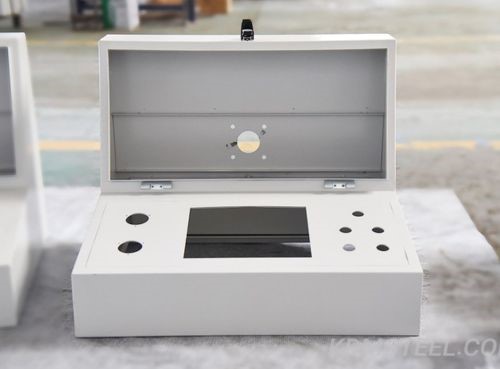
39. Traffic Control Enclosures
They ensure the safety and protected shelter of the electronic devices used in the traffic management systems. They are manufactured to withstand rigorous outdoor climatic conditions and make signal traffic lights and monitoring systems equipment work efficiently.
40. Telecommunications Enclosures
The main purpose of this enclosure is the protection of organized network equipment that includes routers, fiber optics and switches. They are arguably the spine of the communication network placed either indoors or outdoors.
41. Solar Battery Enclosure
These enclosures are designed for housing and shielding batteries used in solar power systems. They offer environmental protection to the solar grid battery panels while securing their storage. This ensures the durability and service life of these storage units.
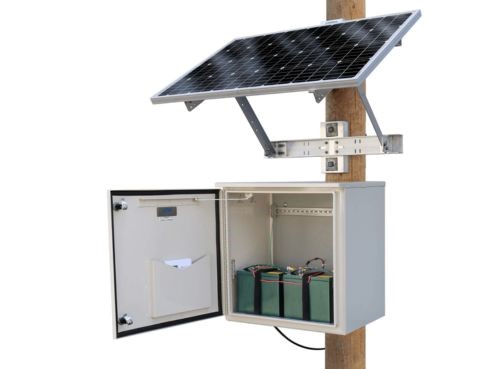
42. Climate-controlled enclosure
Modern climate-controlled electric boxes are designed to contain heating, cooling, humidification, and dehumidification systems. Such systems provide the optimal environment for sensitive electrical devices. Their application is mostly in industrial set-ups where temperature and humidity have to be accurately regulated.
43. Push Button Enclosure
They serve as enclosures for push button switches that are used for various control devices in an industrial setup. These electrical boxes are commonly applied in process control panels in various industrial setups.
44. PLC Enclosure
These electrical enclosures primarily house programable logic controllers and any other related electrical components. They shield such components from adverse climatic conditions creating dependability and effectiveness of such systems in the industrial set-up.
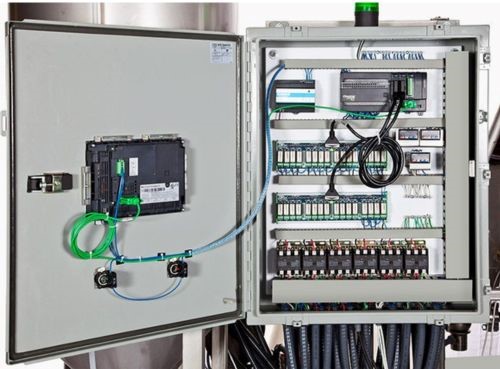
45. Instrument Enclosure
Such enclosures protect the vulnerable instrument equipment from adverse environmental elements. Their application is commonly found in automated industries where the accuracy of the data collected has to be dependable and precise over long periods.
46. Control Cabinet Enclosure
Made of various metal materials, they are the spine of complex control systems by providing protection as well as organizing the whole system. As a centralization tool for all control components, they serve a key role in activities related to industrial control.
47. Operator Console Enclosure
Their design ensures that the operator has enough workspace to monitor and operate the control systems involved. They house control system components by ensuring ergonomic efficiency that optimizes the available workspace for maximum efficiency.
48. Distribution Board Enclosure
This is the enclosure that houses all circuit breakers and distribution panels. They ensure that your electric power is disseminated in a safe and orderly way. Their application is common in most domestic, industrial, and business set-ups housing various breakers for different electrical circuits.
49. HMI Enclosure
HMI enclosures are intended for the protection of human-machine interfaces and any other related control equipment. They enable a streamlined interaction between the machine and its operator. In any automated industrial set-up, they enhance the machinery controls and monitoring.
50. EV Charger Enclosure
These enclosures shield electric vehicle chargers including all the connecting elements that come with them. They guarantee their functionality and ensure their safe application since they have weather and vandal-resistant features. Their versatility enables you to use them for both residential and commercial applications.
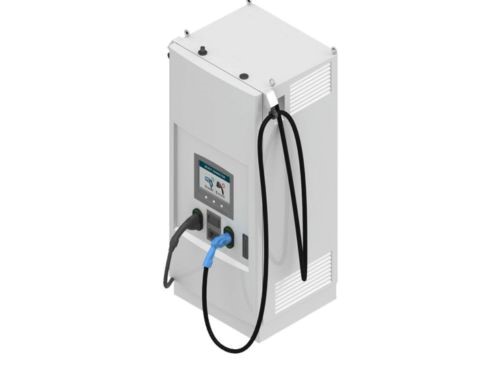
51. Outdoor Telecom Enclosure
They ensure telecommunication equipment are operating safely by protecting it from the various vagaries of weather common in outdoor environments. Their most common application is in communication cell towers and various types of outdoor data transmission hubs.
52. Server Rack Cabinets
They offer ample, organized, and secure enclosures for servers, IT equipment, and all their related accessories. Manufactured to ease up on the cooling of these components, they ensure the physical security of data management in IT centers and other related applications.
Based on the IP Rating
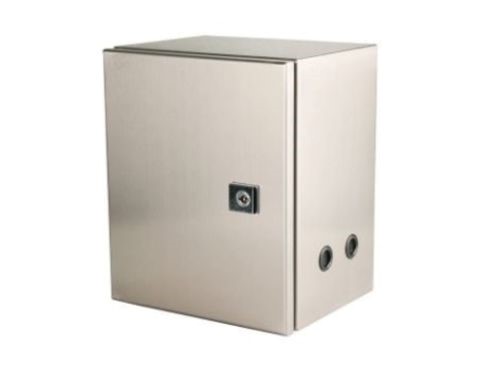
53. IP44 Enclosure
They are fully enclosed and have the ability to resist operating conditions having water that splashes from various directions. They are also impervious to any particles having a diameter of 1mm or less. Mostly applicable in indoor applications that are prone to occasional exposure to gusts of water.
54. IP45 Enclosure
They are designed to offer protection to your electrical components against contamination from foreign objects above 1mm in size. They can additionally protect them from low water jets emanating from any direction. They are suitable for applications where moderate protection against water penetration is required.
55. IP54 Enclosure
These enclosures can offer protection to your electrical components against limited penetration of unidirectional water sprays and dust particles. You can use them in both indoor and outdoor applications in environments that have a tolerance to some dust and moisture.
56. IP55 Enclosure
Electrical enclosures with this type of rating can provide full protection for your electrical components against dust penetration. They also offer complete protection against blasts of low-pressure water jets that can come in any direction. They are perfect for industrial applications where moderate amounts of dust and water exist.
57. IP56 Enclosure
With IP 56 enclosures, you are guaranteed of both dustproof and strong water jet protection for your electrical components. Their application is common in extreme environmental conditions where your components require maximum protection from dust and powerful gusts of water.
58. IP57 Enclosure
Enclosures rated IP57 can offer protection to your components against loose dust particles. They can also withstand temporary immersion in water that does not go beyond a meter in depth. They are best suited for applications that may experience brief submersions in their operations.
59. IP65 Enclosure
IP65-rated electrical boxes are normally sealed to completely prevent the entry of dust and low water jet pressures from any direction. They are commonly employed in places with high dust levels and intermittent water splashes that are mostly outdoors or in industrial set-ups.
60. IP66 Enclosure
Enclosures with IP67 ratings offer protection against total dirt ingress and multidirectional high-pressure water jets. They are the best choice of enclosures in applications that need shielding from the jets of strong water and dust.
61. IP67 Enclosure
These enclosures protect your components against even the finest dust ingress and function properly even when immersed in a meter of water for half an hour. Normally applied in environments that are prone to dust with the application subjected to regular temporary submersions.
62. IP68 Enclosure
Besides protecting your components from dust, IP68-rated enclosures can withstand immersions that go beyond one meter below the water surface. They are able to work underwater and in extremely harsh environments where completely safe conditions are a requirement.
Based on the NEMA Rating
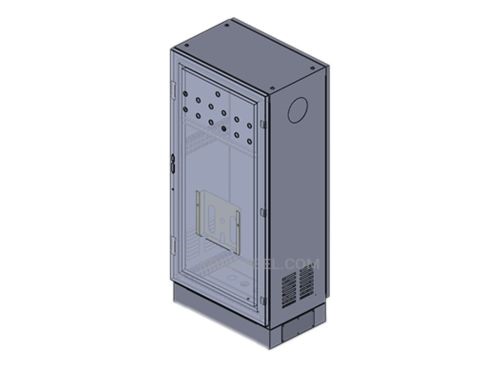
63. NEMA 1 Enclosure
This enclosure design is suitable for indoor applications and protects your components against dust, illumination, and slight splashes of water. They are recommended for general-purpose applications where minimal environmental protection is required.
64. NEMA 2 Enclosure
NEMA 2-rated enclosures protect your components against drops of water and other small environmental threats. They are the best choice for indoor applications, especially in areas where moisture resistance is an operational requirement.
65. NEMA 3 Enclosure
This enclosure is designed to be used mostly outdoors by providing a deflection for your components from wind, dust, rain as well as sleet. Their application is commonly found in residential areas and very light commercial environments.
66. NEMA 3R Enclosure
They guard your enclosed components against rain, water, snow, and any ice that forms or falls on its surface from outside. They work well in outdoor applications having basic weather resistance as an operational requirement.
67. NEMA 3S Enclosure
This NEMA rating ensures the electrical enclosure protects from water, snow, and any ice that forms on its outside. They are versatile enough to permit external mechanism operations even when they are laden with ice formation. They are best suited for extreme weather conditions.
68. NEMA 3X Enclosures
Compared to NEMA 3S, their functionality is the same but with an additional corrosion resistance feature. They are best suited for applications that are prone to aggressive corrosion tendencies.
69. NEMA 3RX Enclosures
These enclosures are a perfect combination of the functions of both NEMA 3R and NEMA 3X enclosures. They provide comprehensive protection of the components against rain, sleet, and any form of corrosion. They work well in applications that are prone to aggressive corrosion tendencies.
70. NEMA 4 Enclosure
They are designed to protected the enclosed components against rain, sleet, dust and splashes of water. They can be used for both indoor and outdoor applications for components requiring extensively strong protection.
71. NEMA 4X Enclosure
The NEMA 4X rated enclosures are characterized by similar protection levels as the NEMA 4 enclosures but with an additional corrosion resistance property. They are superb for very tough and corrosive environments such as marine and chemical processing plants.
72. NEMA 5 Enclosures
They are fabricated for indoor applications where they offer protection against dust and dripping non-corrosive liquids. They are customized to be used in low-moisture environments where minimal dust protection is required.
73. NEMA 6 Enclosures
These NEMA rated enclosures provide efficient hose-directed water ingress protection along with submersion for a limited period of time. You can conveniently use them in both indoor and outdoor applications where there is continuous exposure to water.
74. NEMA 6P Enclosures
Just like NEMA 6 enclosures, they can offer sufficient protection against hose-directed water ingress. What sets them apart is that NEMA 6P-rated enclosures can withstand submersion for extended periods. They are recommended for applications in harsh weather conditions that are prone to constant exposure to water for extended periods.
75. NEMA 12 Enclosure
These enclosures safeguard the enclosed components against dust, dirt, fiber, dripping water, and non-corrosive liquids. Their application is mostly in the industrial and manufacturing set-ups where environmental protective measures are a requirement.
76. NEMA 13 Enclosure
This NEMA rating specifies the enclosure to safeguard components against spraying water, dust particles, oil contamination, and non-corrosive coolants. They are recommended for use in indoor industrial environments that need extensive protection from liquid exposure.
Conclusion
Electrical boxes are a critical part of any overall electrical system. But, with so many options being available, choosing the right one is more than important if you hope to ensure the security and efficiency of your connection.
We’ve laid out the available options above, but don’t be afraid to speak to us at KDM Fabrication if you need a little more help. Request types of electrical boxes PDF for more pieces of information.
More resources:
Top 20 Electric Meter Box Types for your Electrical System Installations – Source: KDM
The Ultimate Guide to Choosing the Right Material for Your Junction Box – Source: KDM
Terminal Box Vs Junction Box – Source: KDM
Junction Box Vs Pull Box – Source: KDM




